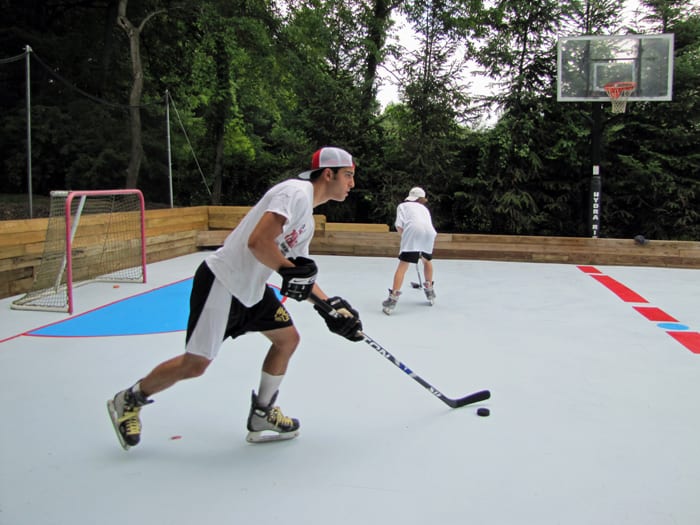One of the greatest inventions to ever hit the planet is synthetic ice. People that love to play hockey on ice, and ice skaters that need to be out on the rink can create their own skating rinks at home with ease. Synthetic ice tiles are simple to install, durable, versatile, and do not need refrigeration to stay perfect for skating. But, where does synthetic ice come from? Is it made out of magical mysterious compounds that allow skaters to freely flow across the surface much like they would as if they were skating on frozen water? Maybe. Read on.
Artificial Ice Flooring in the 1960s
Synthetic ice and artificial ice are the same things if you look at it from the perspective of flooring. However, artificial ice is really the stuff that the movies use to make things look frozen or like they are snowing. In any event, artificial ice flooring back in the 1960s is where it all began.
Although plans for developing a type of flooring that would allow people to ice skate across it on ice skates had been in the makings for several years prior to the first experience of the flooring, the first time synthetic ice actually made a public appearance was in the 60s. At that time there were not as many resources available to create an appropriate type of flooring that would accommodate ice skaters the way the synthetic ice of today does. In other words, it wasn’t until a couple of decades later that developers discovered a fantastic way to create the ultimate synthetic ice flooring.
The early days of synthetic ice were trying, to say the least. However, they were very promising. For example, in order for skaters to successfully glide across the flooring maintenance, people had to continually apply a silicone-based gliding agent that helped the skaters to glide. Unfortunately, this application caused a buildup that was dangerous for the skaters unless it was scraped off and removed on a regular basis. By regular, we mean a couple of times during a game or an event.
Synthetic Ice Evolves

As time passed by, developers gained more knowledge and skills when it came to creating and processing a type of ice flooring that could almost mimic real ice. The way they were able to get to where they are today is by way of synthetic plastic-based polylnmers.
Polymers are molecular chains that join together and bond in a way that is similar to a real chain. There are naturally occurring polymers that are very popular and used every day such as DNA, hair, and types of proteins. Synthetic polymers are polymers that are created out of molecules and fused together by man instead of being naturally developed by nature. The science behind producing polymer plastics is that the developer can create a perfectly sculpted product that is infused with lubricants and other agents by starting at the molecular level. They can bind molecules together that form chains similar to DNA, and other natural polymers that are strong, versatile, and long-lasting.
Thanks to the new technology of polymers and other discoveries manufactures can create synthetic ice panels that have lubricants and other essential elements that promote an ice-like experience for the skaters that get to skate on them. The infused agents are activated by the skaters skating across the surface, much like ice melts to provide a thin layer of water for lubrication.
The Answer to the Question
Synthetic ice comes from years of hard work, determination, and lots of brilliance. Of course, it is made in a manufacturing factory somewhere, but the idea and the perfection come from decades of innovative entrepreneurs developers, and inventors.
***Sniper’s Edge Hockey loves Canada! We proudly ship all of our products to Canada and offer the same return policies as we do for everybody else. We realize the exchange rates for the Canadian dollar are not the best right now, so we’re trying to help by giving you free shipping and no customs/duty.***
